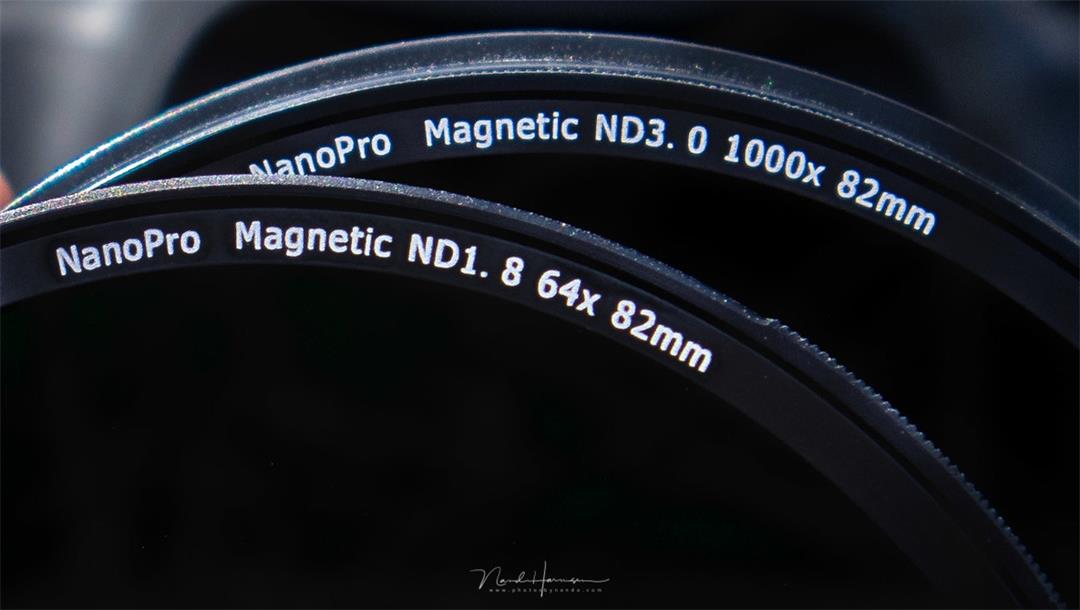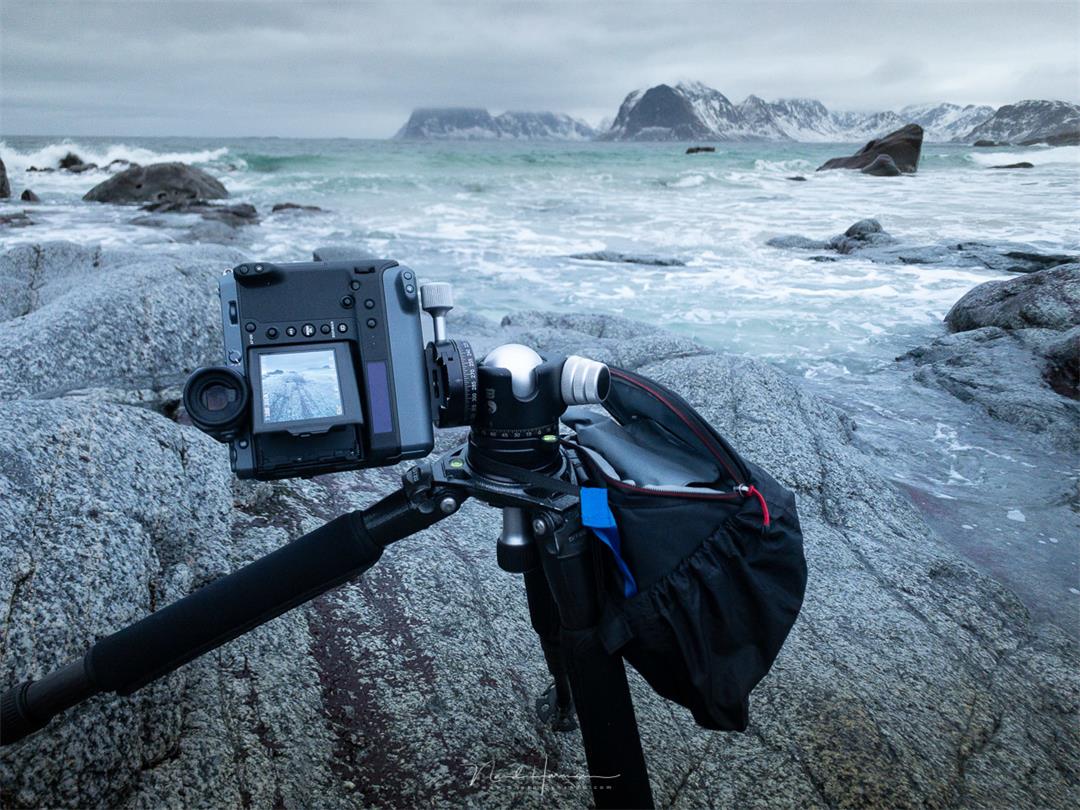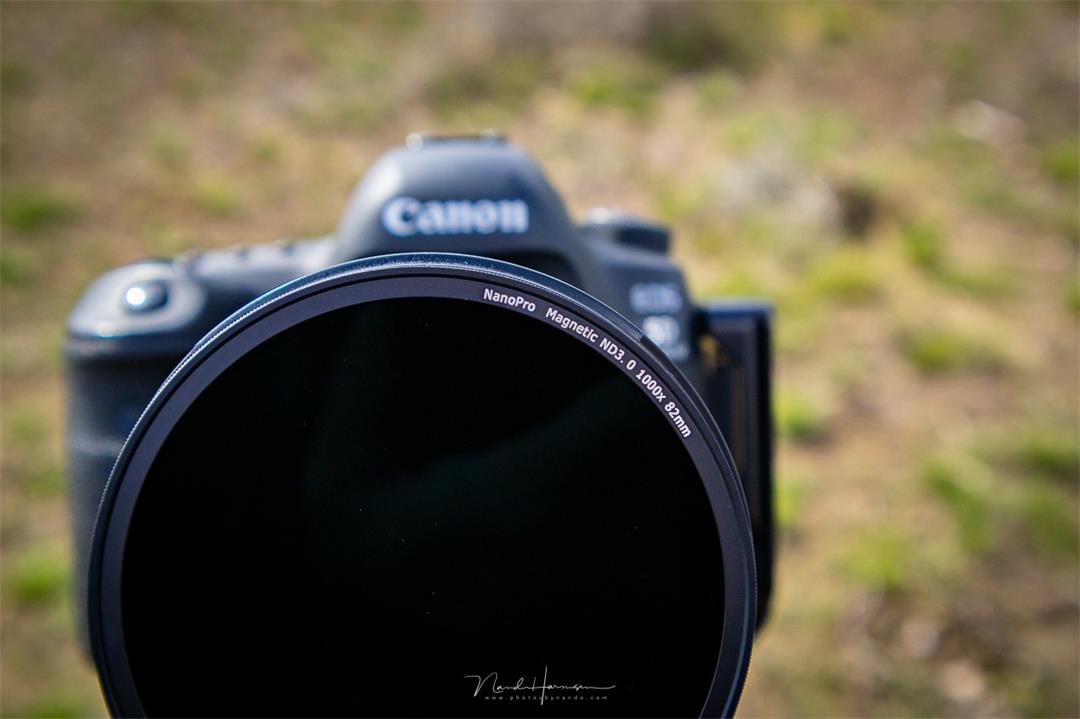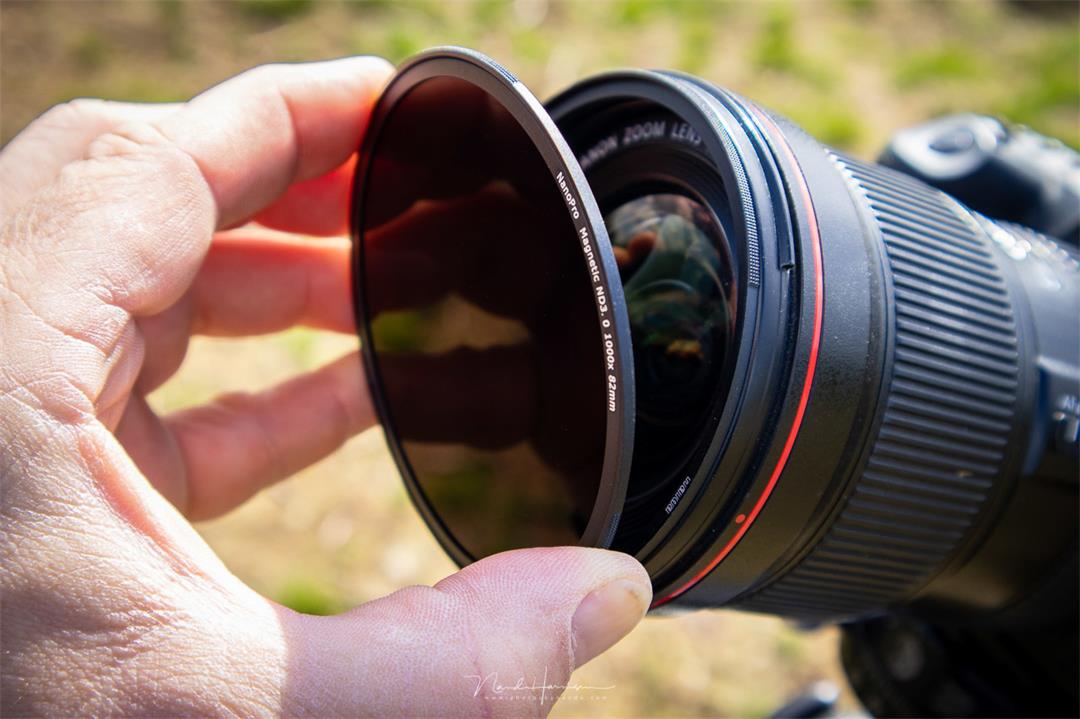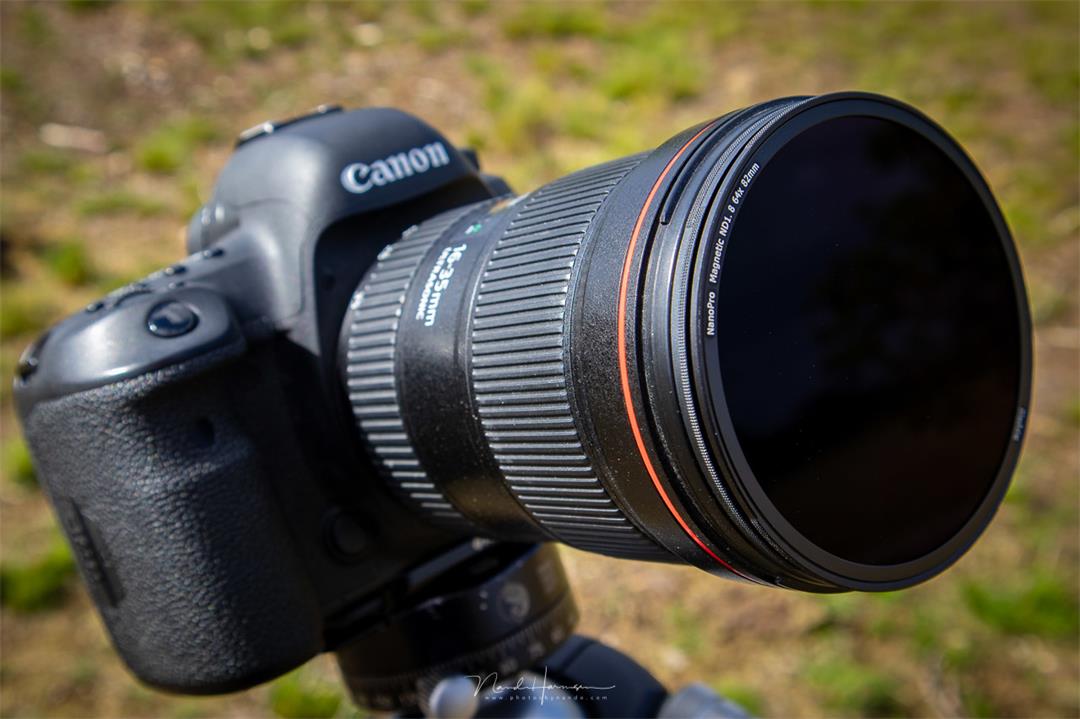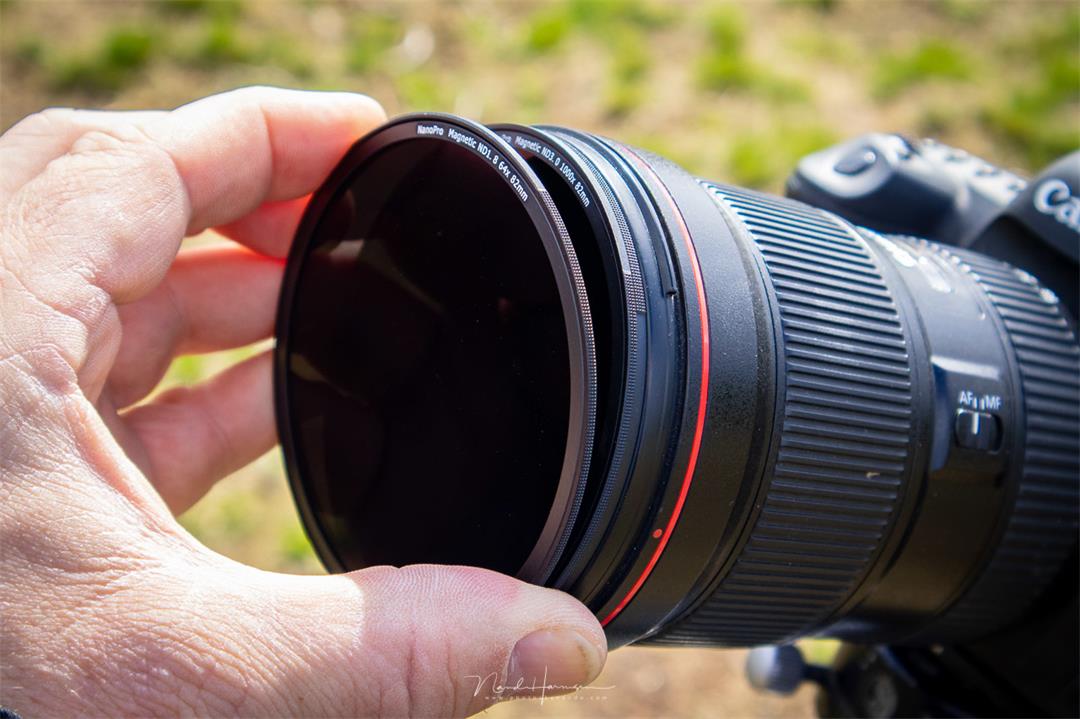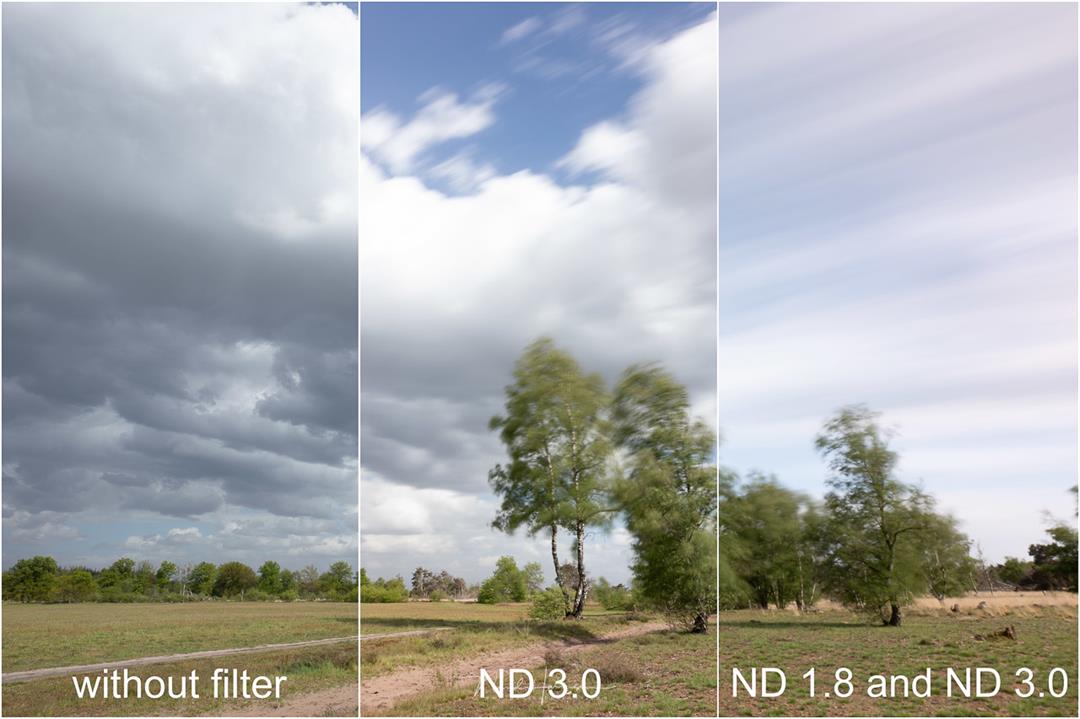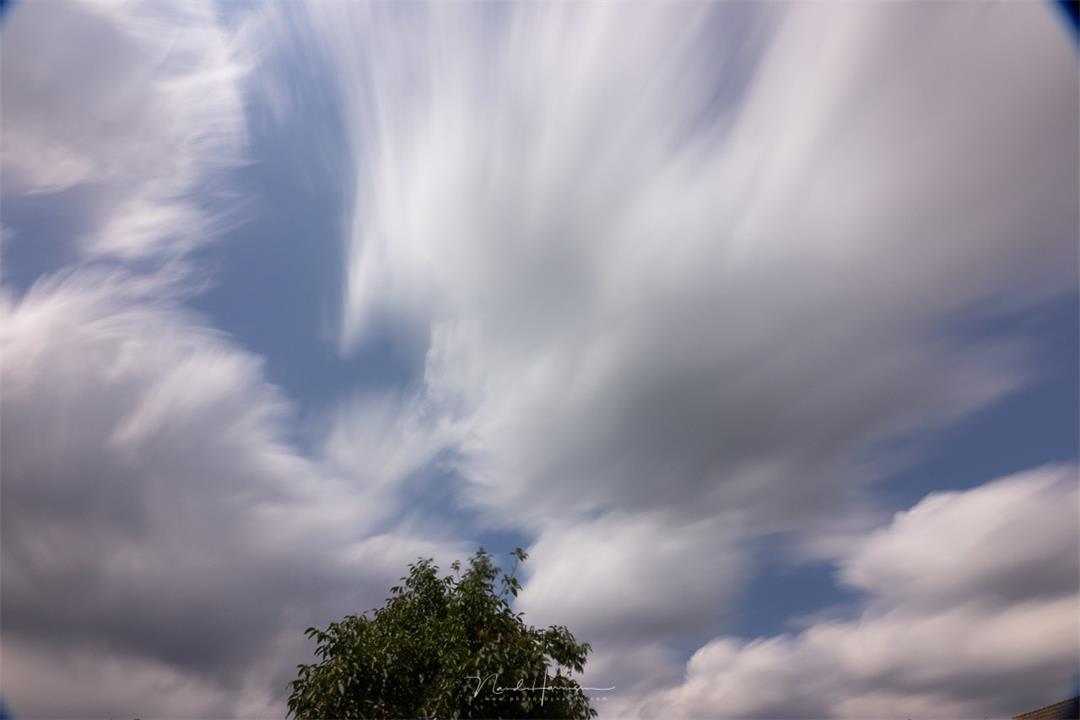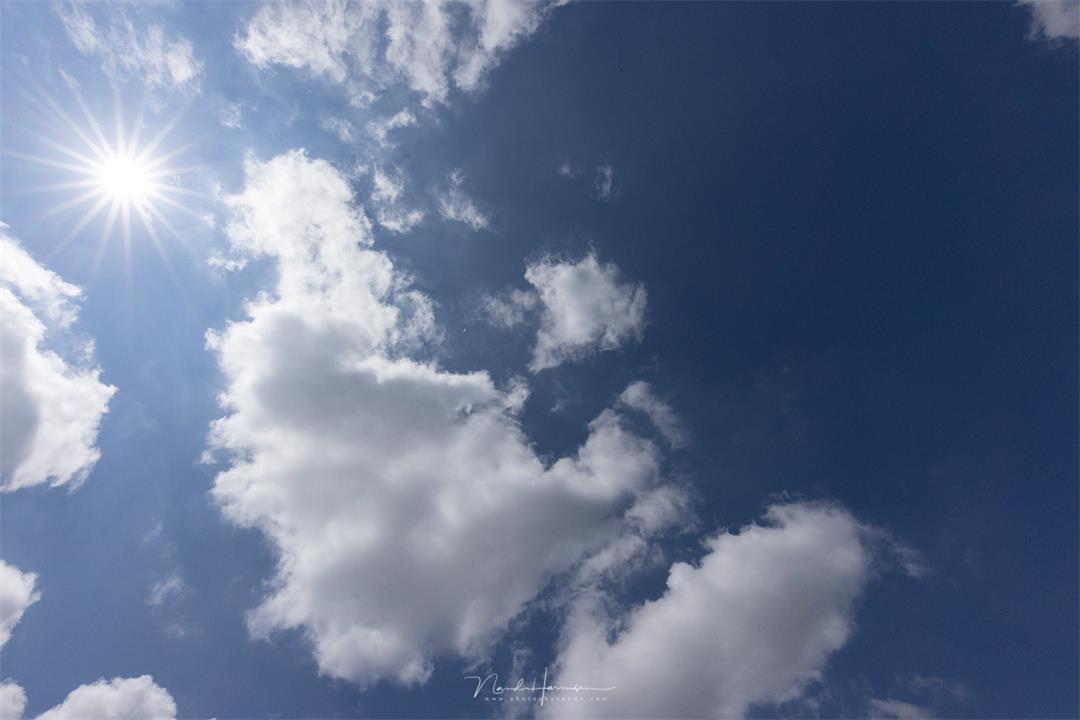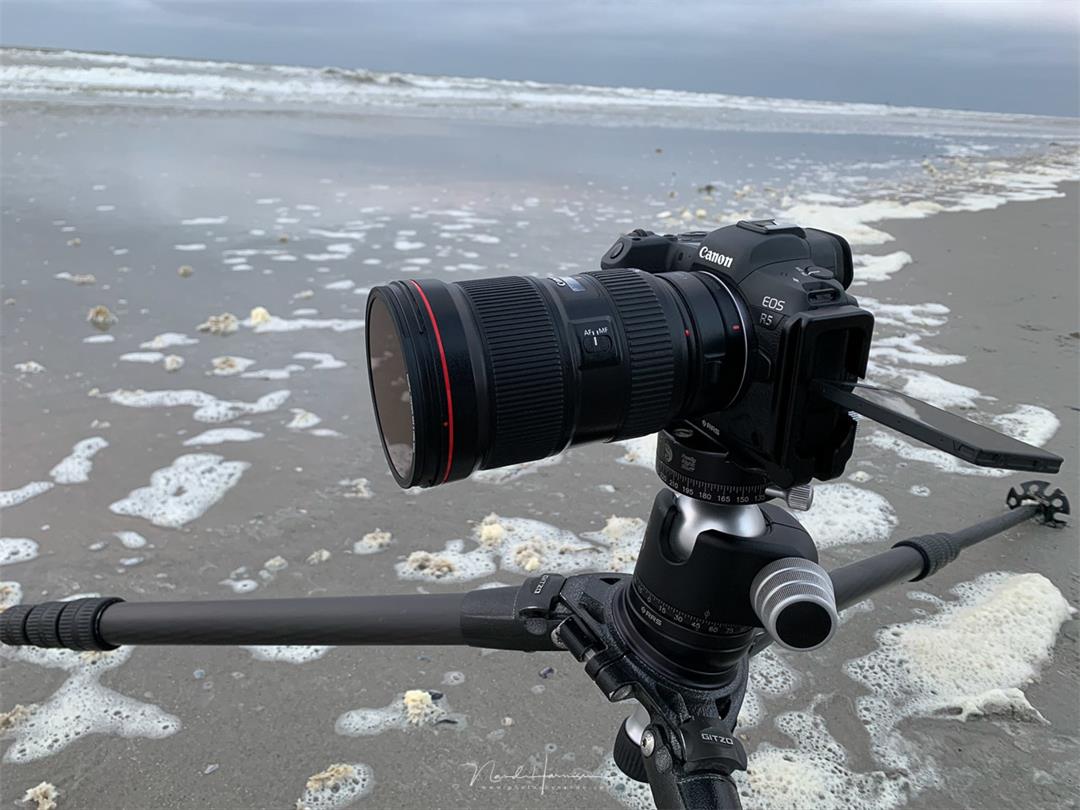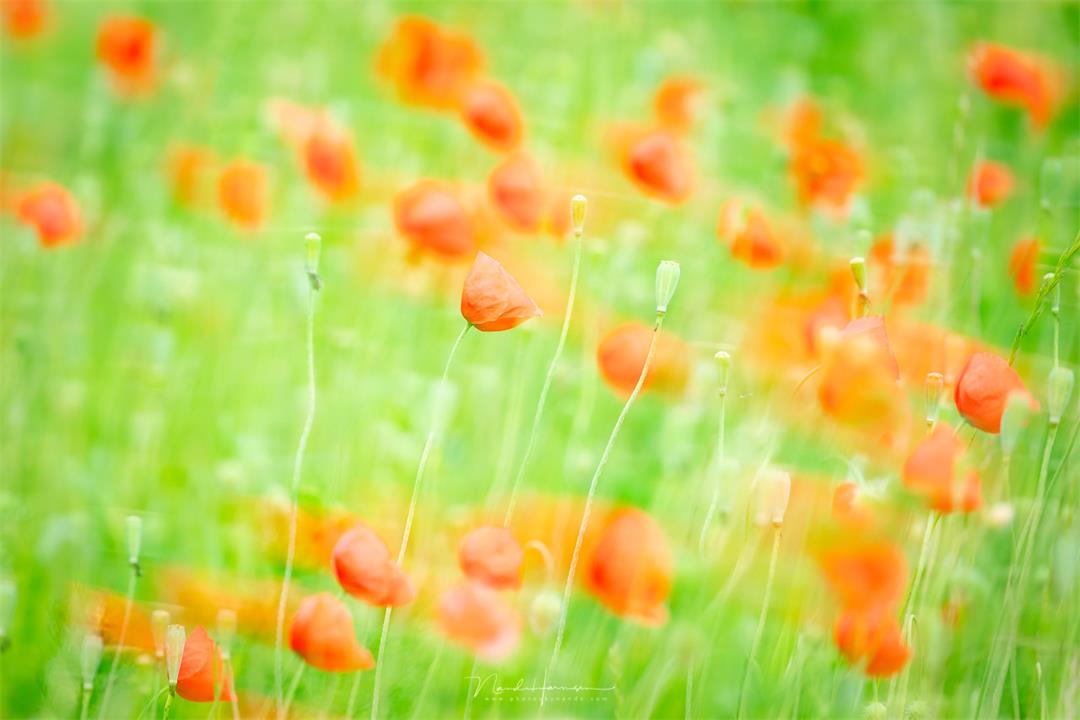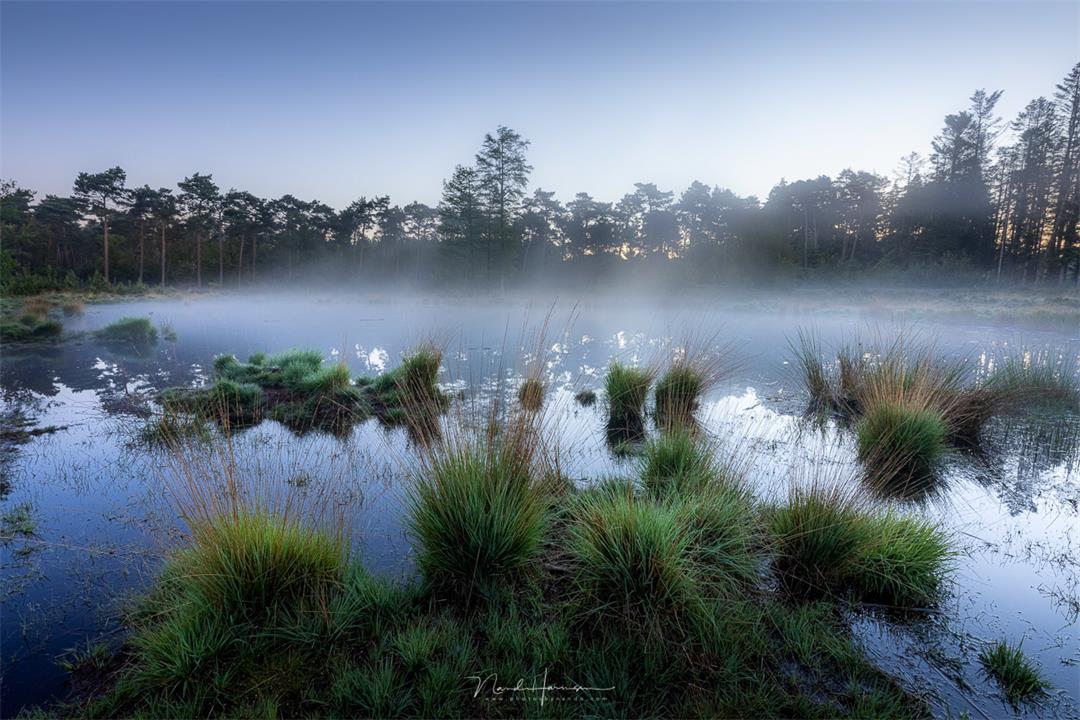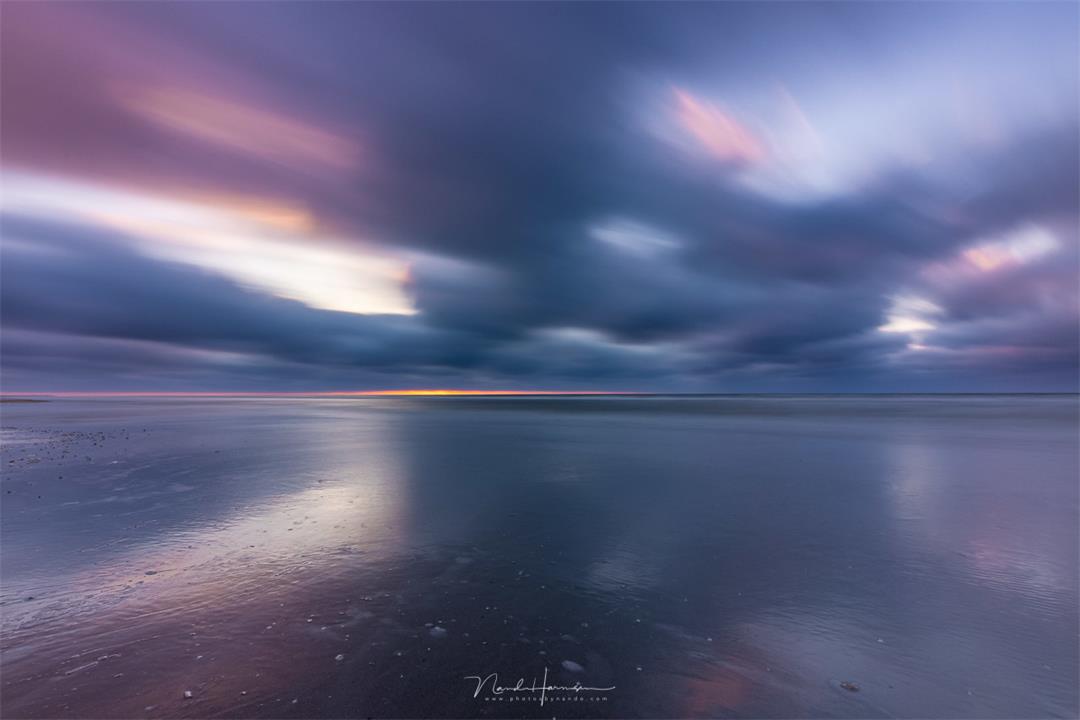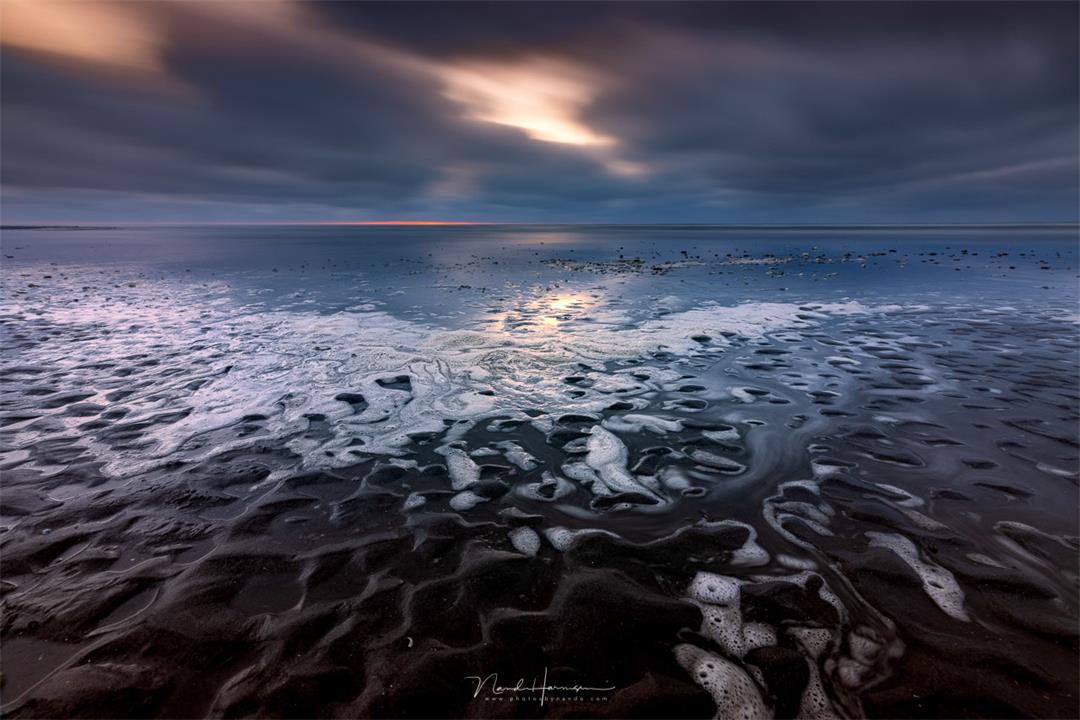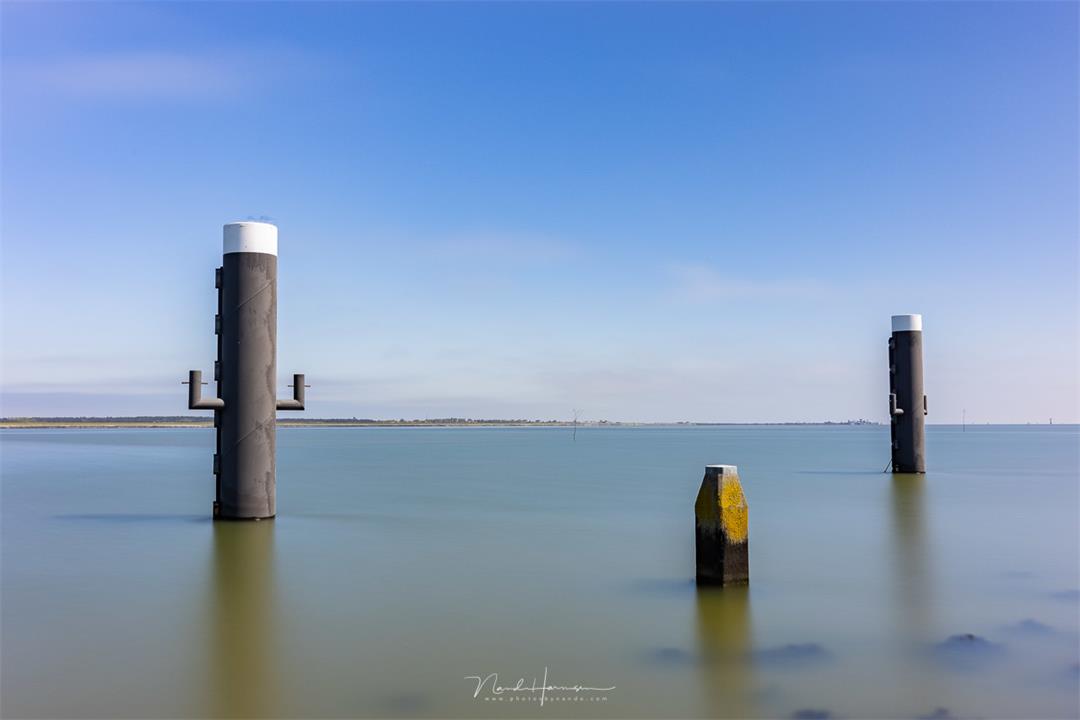We Review the Haida NanoPro Magnetic ND Filters
by Nando Harmsen
Do you like photographing long exposures with an ND filter, but don’t like carrying a large filter holder and square ND filters? In that case, Haida’s NanoPro magnetic filters may be a nice solution.
I love shooting long-exposure images. It makes it possible to show the movement of water, or the movement can be canceled out by an extremely long exposure time. ND filters are the perfect solution to get control over the amount of movement that is visible in the image.
Long exposure photography often requires neutral density filters. Many times, a filter holder is advised together with square ND filters. (23mm, ISO 100, f/11, 2.5 s)
Using a Filter System
For my long exposure photography, I have a nice set of square ND filters that have to be used with a filter holder. With a selection of adapter rings, the filter holder can be used on any lens. This is a great benefit because one filter can be used on a selection of different lenses. The filter holder also allows the use of rectangular graduated ND filters. The downside is the amount of extra stuff you have to bring to your favorite landscape location.
If you have a filter system, it requires a filter pouch for easy use. It is something you will need to carry on top of all the other equipment in your bag.
Not everyone likes using the large, rectangular graduated ND filters. After all, there are other ways of achieving the same result, sometimes even a better result. In that case, a filter holder will only be used for ND filters. Wouldn’t it be nice to have something less bulky?
Using Round Filters
The alternative to a filter system and square filters are the round filters that can be screwed on the front of a lens. This way, you won’t have to carry that large filter holder in that dedicated pouch. On top of that, the risk of light leakage that filter holders are prone to is also absent.
Round ND filters may be a good alternative if you only use this kind of filters.
If you want to use the filter on two lenses with different sizes of lens threads, it might be necessary to buy two or more of the same ND filter, one for each lens. This can make filters expensive and can be considered a big downside. That is exactly the reason a filter holder exists.
It is possible to use step-down rings. Just buy a large size filter like 82mm or even 86mm and use a step-down ring for all the different lenses you own. This is a nice solution that makes round filters easy to use.
The Benefit of Magnetic Filters
Have you tried screwing the filter onto a lens thread? This can be quite a tedious thing to do. Often, the round filters are thin, making it difficult to get a good grip. There is a significant risk of dropping a filter in the process. It can also be tricky when removing a filter from the lens thread. You wouldn’t be the first to drop that expensive filter by accident.
Magnetic filters make the use of filters just as easy as a filter holder and square filters. If you only use ND filters, it might be the better choice.
The answer for that is a magnetic filter. It comes with a magnetic adapter ring that fits onto your lens. Just put the filter in front of the lens with the adapter and it will snap into place. There is no need for screwing that thin filter onto the filter thread anymore.
If you’re done, just grab the filter and pull it away from the lens. If you own a couple of magnetic adapter rings for each lens you own, changing the filter becomes as easy as changing a lens.
Haida NanoPro Magnetic ND Filter
Haida offers a range of magnetic filters. The company provided me with two NanoPro Magnetic ND filters, an ND 1.8 and an ND 3.0. I choose an adapter ring with an 82mm thread, perfect for my 24-70mm and 16-35mm lens.
I could place one adapter ring on each lens, making it easy to exchange filters. I just had to grab the filter and hold it in front of the other lens. It snaps in place, and it stays without problems. The magnets are strong enough to keep the filter in place even if you shake the lens. At the same time, the filter is easily removed without force.
The NanoPro Magnetic ND filter fits perfectly and prevents any light leaks. Removing or changing the filter is easy.
The magnetic filters can also be stacked. Place a second one just by holding it against the first one. Keep in mind, the second filter doesn’t fit as snugly as the first one. And you have to keep an eye out for possible vignetting.
If you want to use more than one ND filter, just place another one on top. Here, you can see the NanoPro ND 3.0 and the ND 1.8 filters.
No Color Shift
An ND filter should not produce any color shifts. I tested the NanoPro Magnetic filters in a daylight situation with some sunlight and a cloudy sky. The difference in color between the image without the filter and the ND 3.0 filter is negligible. Even when stacking the ND 1.8 and the ND 3.0, resulting in a reduction by a factor of 64,000, produces no significant color shift.
The Haida NanoPro Magnetic ND filters don't produce color shift. Even when stacked together, the colors don't change.
Vignetting
The magnetic adapter ring is very thin. The filter itself isn’t protruding that much. This makes it possible to use the NanoPro Magnetic ND filter at 16mm without any vignetting. If you like to stack multiple filters, vignetting will become an issue on extremely wide angle lenses.
Stacking two Haida NanoPro magnetic ND filters will produce some vignetting at 16mm. This is the result without any lens profile corrections.
At 16mm, a minimum amount of vignetting is visible with the ND 1.8 and ND 3.0 stack. It only needs a tiny crop to get rid of it. If you’re using Lightroom, activating the lens profile will remove a lot of the vignetting also.
When the lens profile corrections are done, much of the vignetting is gone. The remaining amount can be removed by a small crop. Keep in mind, this is with two NanoPro magnetic ND filters at 16mm.
Flare
I used the filter under normal conditions and I didn’t notice an increase in flares. I decided to shoot straight into the sun with the ND 3.0 at 16mm, but there was no flare visible at all. Perhaps this isn’t a scientific approach for testing the susceptibility to flares, but I think it can be a good real-life test.
I haven't noticed an increase in flares while using the Haida NanoPro magnetic ND filter. In this simple test shot with the sun in the corner of the frame, no flares are visible.
Conclusion After Using the Haida NanoPro Magnetic ND Filters
I’ve been using the Haida NanoPro Magnetic ND filters during a few different situations. I noticed a few things to be aware of.
First of all, the magnetic adapter ring is very thin. Although there is some profile on the ring for some grip, you need to pay attention when placing the ring on your lens. Once it’s in place, you won’t need to bother anymore. Just place the filter and you’re done.
I have been using the Haida NanoPro Magnetic ND filters while photographing at the beach.
Another thing to be aware of is removing the filter after you’re done. The filter is also very thin, and even though it is removed easily, it doesn’t have too much material to grab on to. But besides these two minor things, using the filters is pretty straightforward.
When changing lenses, it is easy to change filters. But if you want to be on the safe side, just remove the filter before you change lenses. Especially when you have stacked two or more filters, there is a risk one will come loose.
I like the magnetic ND filter system. It is easy to use, doesn't require any filter holder, and light leakage is nonexistent.
Things I Like
No noticeable color shift even when multiple ND filters are stacked
Flare resistant
No light leakage
Filters are thin
Easy to install and use
You don’t need a large filter holder
Perfect usable with step-up rings
Magnetic lens cap available
Wide range of different magnetic filters available
Thinks That Could Be Improved
Profile on the magnetic adapter ring
A better fit when stacking filters
Magnetic lens caps are sold separately
This double exposure of poppies is both with a fast shutter speed and a slow one with the Haida NanoPro Magnetic ND 3.0 filter.
I used the Haida Magnetic ND 3.0 filter to flatten out the details in the fog and to increase the density a little bit. (16mm, ISO 100, f/11, 15 s)
Minimalist beach during incoming tide at sunset. I used the Haida NanoPro Magnetic ND 3.0 filter (16mm, ISO 100, f/11, 60 s).
Incoming tide at the beach during sunset, shot with the Haida NanoPro magnetic ND 3.0 filter (16mm, ISO 100, f/10, 60 s).
A long exposure with both the Haida NanoPro Magnetic ND 1.8 and the ND 3.0 filter stacked together. This is shot at high noon. There is no light leakage and there are no flares (35mm, ISO 100, f/11, 240 s).
Although there are round magnetic gradient ND filters available for this system, I think their use is limited. I find this filter system mainly for the photographer who just needs an ND filter, a polarizer filter, and perhaps a night filter. The filters are easy to take with you and use, and the results I have seen so far show good quality.
What do you think of magnetic filters? Do you find them a good alternative to a filter holder and square filters? Please share your thoughts in the comments below.
Thanks to Haida for providing the two filters for this review. Find the Haida NanoPro Magnetic filters on B&H Photo.
Related News

